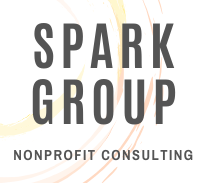Planning Accessible Events for People with Disabilities
Three friends meet at a professional networking event. A Deaf person, a person with cerebral palsy, and a person who uses a wheelchair. The Deaf person looked around and said, “I wish I could understand the presenters. The event coordinator did not arrange an interpreter.” The person with cerebral palsy looked around the room and said, “I wish there were some low bistro tables for me to place my glass of wine on because if one of my walking crutches slipped, I would lose my balance and fall.” The person who uses a wheelchair looked up at the loft above the main floor and said, “I wish they didn’t put all the appetizers on the second floor. There’s no elevator access to them.” These are a few accessibility issues that event coordinators tend to overlook when planning events.
According to the United States Census Bureau’s 2019 American Community Survey, an estimated 1.4 million people with disabilities live in Michigan (or 14.3%). So, in a group of twenty people, at least three may have some type of disability, which can be visible or non-visible. While that may be a small number, individuals with disabilities could be major donors or social influencers that could bring more people to your events. So, always assume that an individual with a disability will show up. Proactively plan your events using universal design.
Here are two of my favorite blogs on planning accessible events, Rooted in Rights published a helpful guide on making your virtual meetings and events accessible to the disability community, and RespectAbility created a toolkit on accessible events that includes different steps before, during, and after the event to make sure that the event is as accessible as possible for all people. Additionally, below are three major accessibility areas to keep in mind when planning your next event.
For guests with hearing difficulty,
Have a designated standing or seating area with a clear and unobstructed view of presenters (and sign language interpreters) for Deaf and hard of hearing guests
Budget in the cost of interpreters and real-time captioning
Make sure the acoustics or sound quality of presenters are loud and clear, especially at the back of the space
For guests with vision difficulty,
Establish some well-lit areas at the venue
Provide text description of the space and images in your marketing and communication materials
Make sure the venue has some comfortable space for service dogs
Describe your physical appearance when you introduce yourself to a blind person, and then state your name each time it is your turn to speak
For guests with mobility difficulty,
Make sure guests that use a wheelchair can enter the venue, including elevator access or a ramp to other floors if your event expands into other spaces.
Provide some accessible tables (that are 28 to 34 inches in height, with 27-inch knee clearance)
Make sure the venue has accessible bathrooms and space out tables for clear pathways and navigation.
Planning your events to be accessible to the disability community is not only the right thing to do. You also demonstrate your commitment to diversity, equity, and inclusion by incorporating accessibility in your services, programs, and events. We would be happy to provide some consultation on making your next event accessible. Contact Spark Group today for a free 30 min chat!
⭐ Join our weekly newsletter where we share tons of exclusive tips, tools, grant opportunities, and resources to our subscribers. Subscribe on the Spark Group home page.




